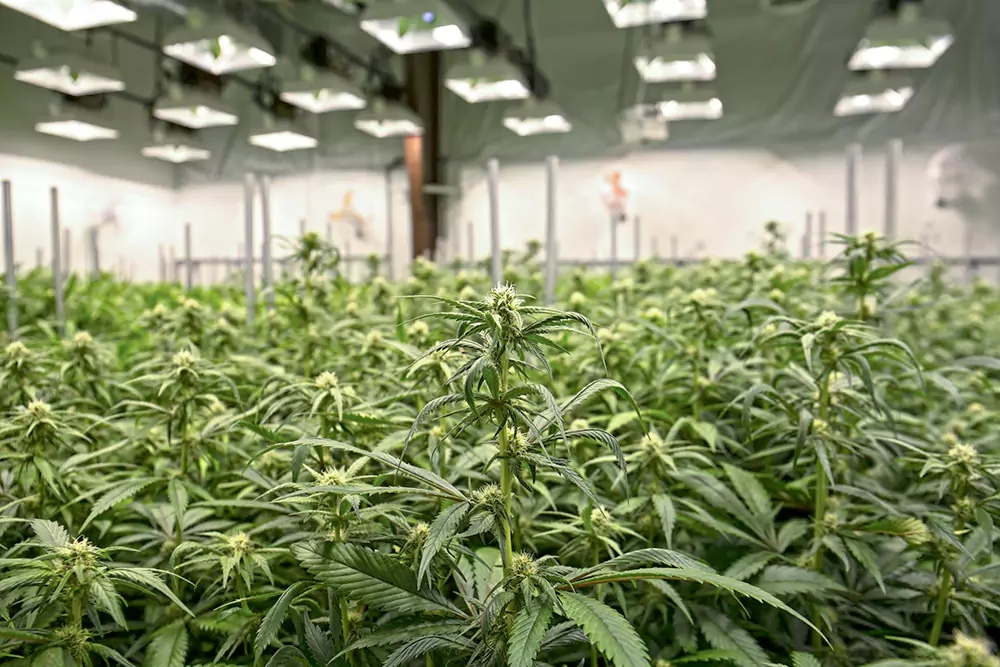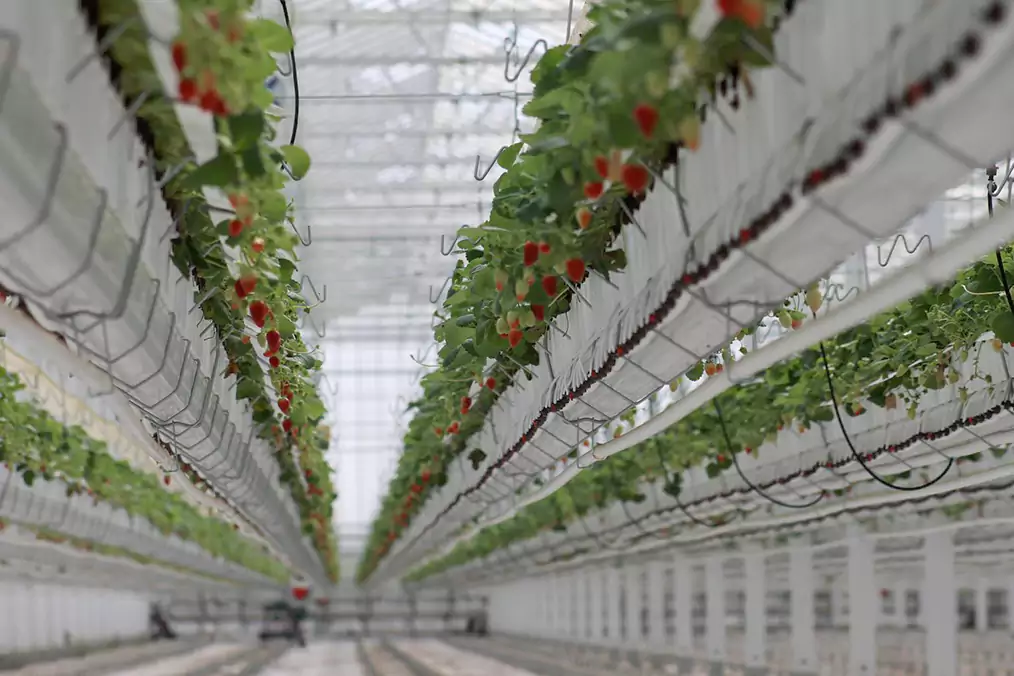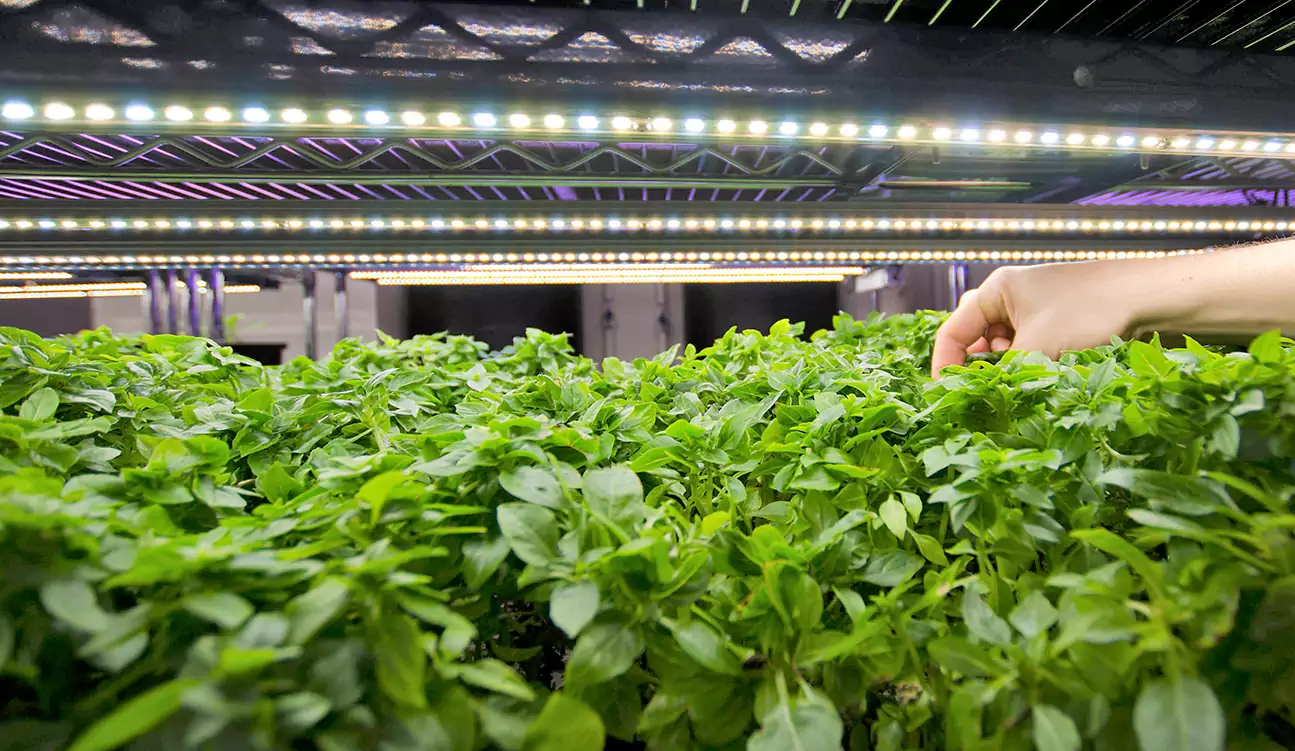Light is an essential environmental factor for plant growth and development. Light supplies energy for plant growth through photosynthesis and is also a necessary regulator of plant growth and development. Supplementing artificial light or irradiating plants with artificial light can promote plant growth, increase yield, improve product form, color, and functional components, and reduce the occurrence of pests and diseases. Today, we’d like to share the development status and trends of the grow lighting industry with you.
Artificial light source technology is more and more widely used in the field of grow lighting. LED has many advantages: high luminous efficiency, low heat generation, small size, long life and many other advantages. It has obvious benefits in the field of grow lighting. LED lighting fixtures will gradually dominate grow lighting.
1. The development status of the LED grow lighting industry
1.1 Grow lighting package
There are many types of packaged devices without a unified measurement and evaluation standard system in the field of grow lighting encapsulating. Large foreign manufacturers mainly focus on high-power, COB and module directions, taking into account the white light series of grow lighting, and combining plant growth characteristics and humanized lighting environment. Compared with domestic products, it has more significant technical advantages in terms of reliability, light efficiency, and photosynthetic radiation characteristics of different plants in different growth cycles, including various sizes of high-power, medium-power and low-power products to meet the needs of various plants. The needs of different growth environments are expected to achieve the goal of maximizing plant growth and energy-saving.
Many core patents for chip epitaxial wafers are still in the hands of early leading companies such as Japan’s Nichia and American Cree. Domestic chip manufacturers still lack market-competitive patented products. Simultaneously, many companies are also developing new technologies in the field of grow lighting encapsulating chips. For example, OSRAM thin-film chip technology enables chips to be encapsulated closely to create a large-area lighting surface. Based on this technology, a high-efficiency LED lighting system with a wavelength of 660nm can reduce 40% of the cultivation area’s energy consumption.
1.2 Grow lighting spectrum and devices
The spectrum of grow lighting is more complex and diverse. Different plants have different growth cycles and even under different growth environments, and the required spectra are quite different. In order to meet these differentiated needs, there are currently the following solutions in the industry: ① A variety of monochromatic light combination solutions, with the most effective peaks for plant photosynthesis at 450nm, 660nm spectrum and 730nm waveband for plant flowering induction The three-band spectrum is mainly combined with the green light of 525nm and the ultraviolet band below 380nm. These kinds of spectra are combined to form the most suitable spectrum according to the different needs of plants. ②Full-spectrum solution to achieve full coverage of plant demand spectrum. SUNLIKE represented by Seoul Semiconductor and Samsung, this type of spectrum may not be the most efficient. Still, it is suitable for all plants, and the cost is much lower than that of monochromatic light combination solutions. ③Mainly full-spectrum white light, plus 660nm red light combination scheme, to improve the effectiveness of the spectrum. This scheme is more economical and practical.
Grow lighting monochromatic light (the main wavelengths are 450nm, 660nm, 730nm) encapsulated devices are covered by many domestic and foreign companies, while domestic products are more diverse and have more specifications, and foreign manufacturers’ products are more standardized. At the same time, In terms of photosynthetic photon flux and light efficiency, there is still a big gap between domestic and foreign encapsulating manufacturers. In addition to products with the main wavelength bands of 450nm, 660nm, and 730nm for grow lighting monochromatic light encapsulating devices, many manufacturers are also developing new products in other wavelength bands to achieve complete product coverage of photosynthetic effective radiation (photo-synthetically active radiation )wavelengths (450-730nm).
Monochromatic LED grow lights are not suitable for the growth of any plants. The advantages of full-spectrum LEDs are therefore highlighted. The full spectrum must first achieve full coverage of the full spectrum(400-700nm) of visible light, and also improve the performance of the blue-green light(400-700nm) and deep red light(660-700nm). Use ordinary blue LED or ultraviolet LED chip with phosphors to achieve “full” spectrum, and its photosynthetic efficiency has its level. Most manufacturers of grow lighting white LED encapsulating devices use Blue chip + phosphors to achieve full spectrum. In addition to the encapsulating mode of monochromatic light and blue light or ultraviolet chip plus phosphor to achieve white light, grow lighting encapsulating devices also have a composite encapsulating mode that uses two or more wavelength chips, such as red ten blue/ultraviolet, RGB, RGBW . This encapsulating mode has excellent advantages in dimming.
In terms of narrow-wavelength LED products, most encapsulating suppliers can provide customers with various wavelength products in the 365-740nm band. Most encapsulating manufacturers have different spectrums for customers to choose from regarding the grow lighting spectrum converted by phosphors. Compared with 2016, its sales growth rate in 2017 has achieved a substantial increase. The growth rate of 660nm LED light source is concentrated in 20%-50%, and the sales growth rate of phosphor-converted LED grow light source reaches 50%-200 %, that is, the sales of phosphors converted to LED grow light sources are growing faster.
All encapsulating companies can provide 0.2-0.9 W and 1-3 W general encapsulating products. These light sources allow lighting manufacturers to have good flexibility in lighting design. In addition, some manufacturers also provide higher power integrated encapsulating products. At present, more than 80% of the shipments of most manufacturers are 0.2-0.9 W or 1-3 W. Among them, the shipments of leading international encapsulating companies are concentrated in 1-3 W, while the shipments of small and medium-sized encapsulating companies are concentrated in 0.2-0.9 W.
1.3 Fields of grow lighting applications
From the application field, grow lighting fixtures are mainly used in greenhouse lighting, all-artificial lighting plant factories, plant tissue culture, field lighting, household vegetable and flower planting, and laboratory research.

- In solar greenhouses and multi-span greenhouses, the proportion of artificial light for supplementary light is still low, and metal halide lamps and high pressure sodium lamps are the main ones. The penetration rate of LED grow lighting systems is low. Still, the growth rate will start to accelerate as the cost drops, the main reason is that users have long-term experience with metal halide lamps and high-pressure sodium lamps. The use of metal halide lamps and high-pressure sodium lamps can avoid burns to plants and provide about 6% to 8 % Of heat. The LED grow lighting system did not provide specific and effective instructions and data support, which delayed its application in daylight and multi-span greenhouses. At present, small-scale demonstration applications are still the mainstay. As LED is a cold light source, it can be relatively close to the plant canopy and has less temperature impact. In daylight and multi-span greenhouses, LED grow lighting is more commonly used in inter-grow lighting fixtures.
- Field application. The penetration and application of grow lighting in facility agriculture have been relatively slow, while the application of LED grow lighting systems(photoperiod control)for long-day crops(such as dragon fruit) with high economic value outdoors has achieved rapid development.
- Plant factories. The fastest and most widely used grow lighting system currently is the all-artificial light plant factory, which is divided into centralized multi-layer and distributed movable plant factories by category. The development of artificial light plant factories in China is very rapid. The centralized multi-layer all-artificial light plant factory’s investment subject is not traditional agricultural companies, but more companies engaged in semiconductor and consumer electronics products, such as Zhongke San’an, Foxconn, Panasonic Suzhou, JD.com, and COFCO and Xi Cui and other new modern agricultural companies. In distributed and mobile plant factories, shipping containers (new or second-hand container reconstruction) are still the standard carrier. The grow lighting systems of all artificial plants mostly use linear or flat-panel array lighting systems, and the number of planting varieties continues to expand. Various experimental light formula LED light sources have begun to be widely and widely used. The products on the market are mainly green leafy vegetables.
- Home plant cultivation. LED can be used in household plant table lamps, household plant planting racks, household vegetable growing machines, etc.
- Cultivation of medicinal plants. Cultivation of medicinal plants such as Anoectochilus, Lithospermum officinale, etc. The products in these markets have higher economic value and are currently an industry with more grow lighting applications. Besides, the legalization of cannabis cultivation in North America and parts of Europe has promoted the application of LED grow lighting in the field of cannabis cultivation.
- Flowering lights. As an indispensable tool for adjusting the flowering time of flowers in the flower gardening industry, the earliest fluorescence lamps used were incandescent lamps, followed by energy-saving fluorescent lamps, and more LED-type fluorescence lamps have gradually replaced traditional lamps as the industrialization of LEDs progresses.
- Plant Tissue Culture. Traditional tissue culture light sources are mainly white fluorescent lamps, which have low light efficiency and considerable divergence. LEDs are more suitable for efficient, controllable and space-oriented plant tissue culture due to their low power consumption, low heat generation and long life. At present, white LED tubes are gradually replacing white fluorescent lamps.

1.4 Regional distribution of grow lighting companies
According to statistics, there are currently more than 300 grow lighting companies in China. Grow lighting companies in the Pearl River Delta area account for more than 50%. They are already in a major position; grow lighting companies in the Yangtze River Delta account for about 30%, which are still important production areas of grow lighting products. Traditional grow lighting companies are mainly distributed in the Yangtze River Delta, the Pearl River Delta and the Bohai Rim. The Yangtze River Delta accounts for 53%, the Pearl River Delta and the Bohai Rim account for 24% and 22% respectively; LED grow lighting manufacturers are mainly distributed in the Pearl River Delta. Delta region (62%), Yangtze River Delta region (20%) and Bohai Rim region (12%)
2. LED grow lighting industry development trend
- Specialization
LED grow lighting has good waterproof performance due to its adjustable spectrum and light intensity, and low overall heat emission, and is suitable for grow lighting in various scenes. At the same time, changes in the natural environment and people’s pursuit of food quality have promoted the vigorous development of facility agriculture and plant factories, and enabled the LED grow lighting industry to enter a period of rapid development. In the future, LED grow lighting will play an important role in improving agricultural production efficiency, improving food safety, and improving fruit and vegetables’ quality. The LED light source for grow lighting will develop further along with the industry’s gradual specialization and move in a more targeted direction.
- High efficiency
The improvement of light efficiency and energy efficiency is the key to greatly reducing the operating costs of grow lighting. Using LEDs to replace traditional lamps and dynamically optimizing the light environment according to plants’ light formula requirements from the seedling stage to the harvest stage is an inevitable trend of future delicate agriculture. In terms of increasing yield, according to the developmental characteristics of plants, it can be cultivated in stages and regions combined with light formula to improve the production efficiency and yield of each stage; in terms of improving quality, nutrition regulation and light regulation can be used to increase the content of nutrients and other health functional ingredients.
It is estimated that the current national demand for vegetable seedlings is 680 billion, while factory seedlings’ production capacity is less than 10%. The seedling industry has high environmental requirements, and the production season is mostly winter and spring, at this time, natural light is weak and artificial lighting is needed, grow lighting has a relatively high input and output, and investors’ acceptance is high; fruits and vegetables (tomato, cucumber, melon, etc.)need to be grafted, under high humidity conditions, a specific spectrum of light supplements to promote the healing of grafted seedlings, LED has unique advantages. Greenhouse vegetable planting to supplement light can make up for the lack of natural light, improve plant photosynthesis, promote flowering and fruiting, increase yield, and improve product quality. LED grow lighting has a broad application prospect in vegetable seedling and greenhouse production.
- Intelligent
Grow lighting has a strong demand for real-time control of light quality and light quantity. With the improvement of intelligent control technology and the application of the Internet of Things, various monochromatic spectrums and smart control systems realize time control and light control. The light quality and light quantity output adjusted in time with plants’ growth state is bound to become the main trend of the future development of grow lighting technology.

uPowerTek has been focusing on flexible and intelligent solutions for grow lights and horticultural lighting applications in vertical forms for several years. 30-800W IP67 waterproof UL class P and ENEC certified drivers with unique features like dim to off and programmability are already in wide use globally. The wide input voltage LED drivers for 277Vac/347Vac/380Vac/480Vac grid lines offer more choices for high power applications, especially in US and Canada. Quick customization and professional service are one of the key reasons uPowerTek wins the global market.





